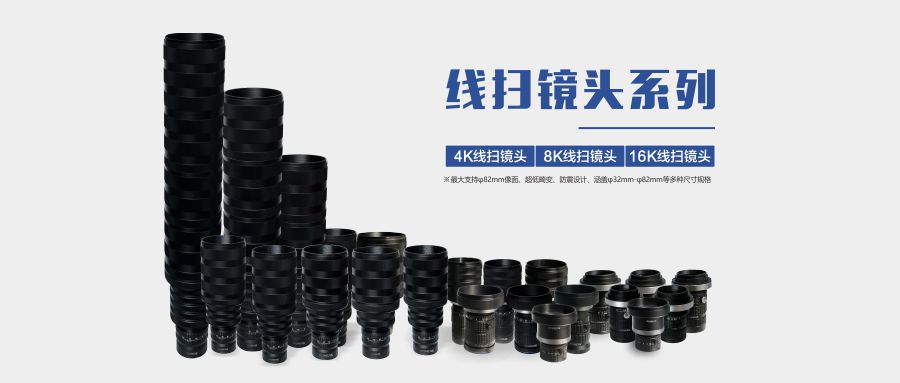
Line scan industrial lens selection is a very important part of the machine vision system, which directly determines the quality of imaging and system performance.


Understanding imaging needs:
① Resolution: according to the application scene on the imaging clarity requirements, select the appropriate resolution of the line scanning industrial lens. High-resolution imaging applications require the selection of high-resolution lens.
② field of view: according to the size of the shooting range, determine the appropriate field of view. Application scenarios where large-sized objects are photographed require the selection of lenses with a larger field of view.
③ Maximum image plane: Ensure that the maximum image plane of the lens matches the size of the camera sensor to obtain a complete imaging area.
④ Working Distance: According to the distance between the lens and the object in the actual application, select the lens within the appropriate working distance range.
Know the size of the imaged object: Determine the appropriate scan length based on the size of the imaged object. This helps to ensure that the lens is able to completely cover the object and acquire complete image information.
Imaging speed: Select a line scan industrial lens with a high frame rate based on the imaging speed required. Application scenarios that require high-speed imaging, such as dynamic inspection on production lines, require the selection of lenses that can support high-speed scanning.
Lens interface and camera matching: to ensure that the selected lens interface and camera interface match, or can be matched through the external conversion port. Common lens interface C port, CS port and F port, etc., need to be selected according to the camera's interface type.
Lens aperture and image brightness: The aperture size of the lens determines the brightness of the image. In the application of shooting high-speed moving objects or short exposure time, a large aperture lens should be selected to improve the image brightness.
Lens resolution and MTF performance: A high resolution lens can obtain a clearer image. At the same time, the MTF (modulation transfer function) performance of the lens is also an important indicator of the evaluation of the lens resolution. Choose a lens with high MTF performance to get better imaging results.
Through reasonable selection, you can ensure that the machine vision system to obtain high-quality imaging effect, and meet the needs of the actual application.
Product recommendation
TECHNICAL SOLUTION
MORE+You may also be interested in the following information
FREE CONSULTING SERVICE
Let’s help you to find the right solution for your project!

- APPICATION CASE
- RESOURCE CENTER
- DOWNLOAD CENTER
SOLUTIONS SUPPORT
- ZOOM LENS SELECTION TOOL
- TELECENTRIC LENS SELECTION TOOL
- FA LENS SELECTION TOOL
- ZOOM RATIO TABLE
- CERTIFIED MODEL
SELECTION TOOL
- WHY POMEAS
- FAQ
- PRIVACY POLICY
- TERMS OF USE
- DELIVERY & RETURN POLICY
CUSTOMER CARE
 ADDRESS
ADDRESS
Add.:No.68, Chongwei Road, Baizhoubian, East district, Dongguan, China, 523000
CONTACT
 Tel:+ 86-0769-2266 0867
Tel:+ 86-0769-2266 0867
 Fax:+ 86-0769-2266 0867
Fax:+ 86-0769-2266 0867
 E-mail:marketing@pomeas.com
E-mail:marketing@pomeas.com

Wechat QR code

 ASK POMEAS
ASK POMEAS  PRICE INQUIRY
PRICE INQUIRY  REQUEST DEMO/TEST
REQUEST DEMO/TEST  FREE TRIAL UNIT
FREE TRIAL UNIT  ACCURATE SELECTION
ACCURATE SELECTION 